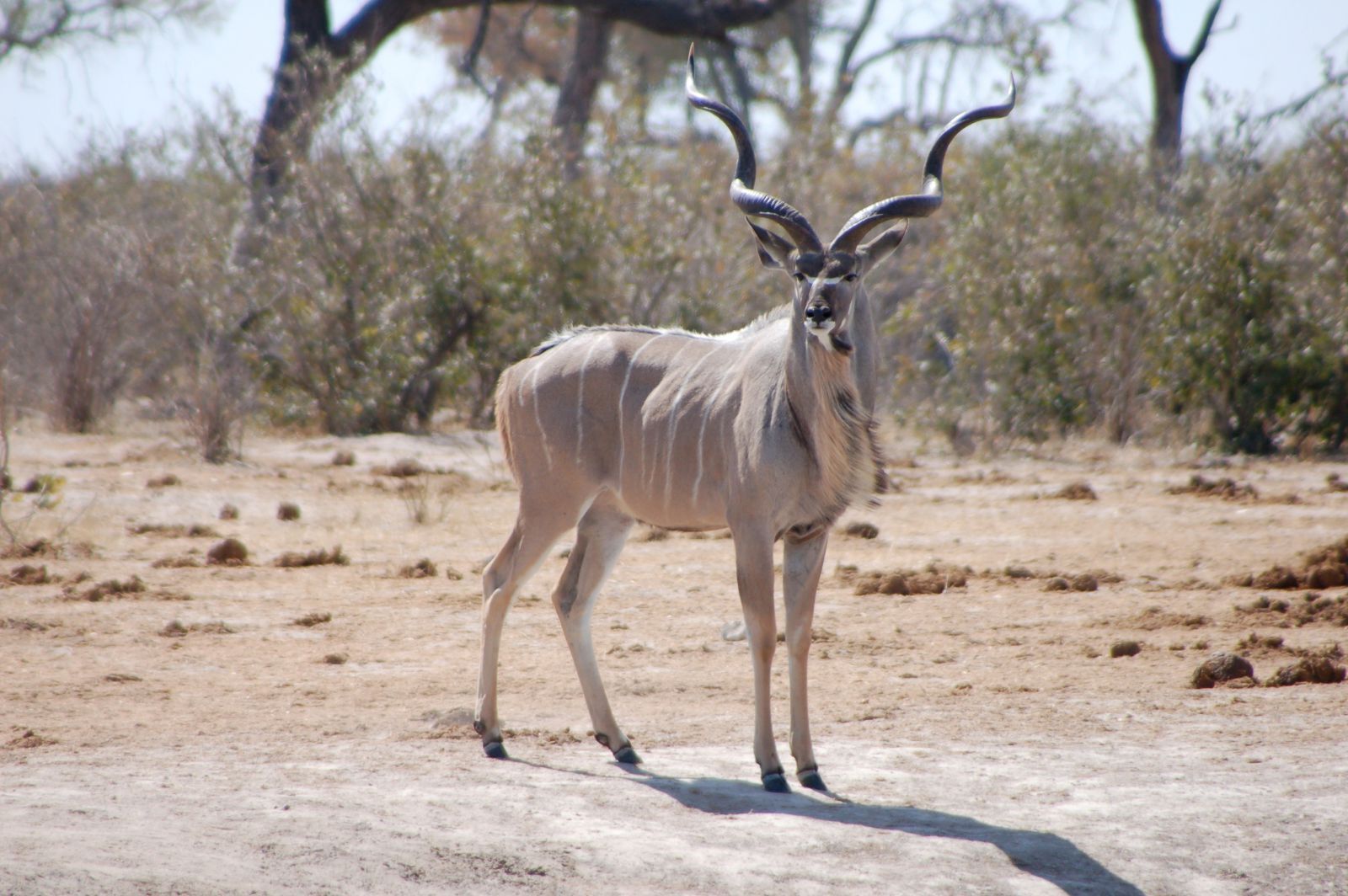
Ever wondered what makes the Greater Kudu so fascinating? This majestic antelope, native to eastern and southern Africa, boasts impressive spiral horns that can reach up to 72 inches in length. Known for their striking appearance, Greater Kudus have a unique blend of white stripes on their bodies, which helps them blend into their woodland habitats. These herbivores are not just beautiful but also incredibly agile, capable of leaping over obstacles up to 8 feet high. Despite their size, they are surprisingly elusive, often hiding in dense bush to avoid predators. Want to learn more about these incredible creatures? Keep reading to uncover 30 amazing facts about the Greater Kudu!
What is a Greater Kudu?
The Greater Kudu is one of Africa's most majestic antelopes. Known for their impressive spiraled horns and striking stripes, these creatures are a sight to behold. Let's dive into some fascinating facts about them.
-
Scientific Name: The Greater Kudu's scientific name is Tragelaphus strepsiceros.
-
Horns: Males have long, spiraled horns that can grow up to 72 inches. Females do not have horns.
-
Habitat: They inhabit woodlands and savannas across eastern and southern Africa.
-
Diet: Kudus are herbivores, primarily feeding on leaves, grass, and fruits.
-
Height: Males can stand up to 63 inches tall at the shoulder, while females are slightly shorter.
-
Weight: Males can weigh between 420-600 pounds, whereas females weigh between 260-460 pounds.
Unique Physical Features
Greater Kudus have several distinctive physical traits that set them apart from other antelopes. These features not only make them unique but also aid in their survival.
-
Stripes: They have 6-10 vertical white stripes running down their bodies, which help with camouflage.
-
Large Ears: Their large, rounded ears provide excellent hearing, crucial for detecting predators.
-
Coat Color: Their coat color ranges from brownish-gray to reddish-brown, depending on their habitat.
-
White Markings: A white chevron-shaped mark between their eyes is a notable feature.
-
Tail: They have a bushy tail with a white underside, which they raise when alarmed.
Behavior and Social Structure
Understanding the behavior and social structure of Greater Kudus can provide insights into their daily lives and survival strategies.
-
Solitary Nature: Males are often solitary or form small bachelor groups, while females and their offspring form herds.
-
Territorial: Males are territorial and will fight for dominance using their horns.
-
Communication: They communicate through vocalizations, body language, and scent markings.
-
Nocturnal: Primarily active during the early morning and late afternoon, they rest during the hottest part of the day.
-
Leaping Ability: Kudus are excellent jumpers, capable of leaping over 8 feet high.
Reproduction and Lifespan
The reproductive habits and lifespan of Greater Kudus are crucial for their population sustainability.
-
Breeding Season: The breeding season varies by region but typically occurs during the rainy season.
-
Gestation Period: The gestation period lasts about 240 days, resulting in the birth of a single calf.
-
Calf Rearing: Calves are hidden in dense vegetation for the first few weeks of life to protect them from predators.
-
Weaning: Calves are weaned at around 6 months old.
-
Lifespan: In the wild, Greater Kudus can live up to 8 years, while in captivity, they can live up to 23 years.
Predators and Threats
Greater Kudus face numerous threats in the wild, both from natural predators and human activities.
-
Natural Predators: Lions, leopards, hyenas, and wild dogs are their primary predators.
-
Human Threats: Habitat loss, poaching, and hunting pose significant threats to their population.
-
Disease: They are susceptible to diseases such as anthrax and rinderpest.
-
Conservation Status: Currently, they are classified as "Least Concern" by the IUCN, but their population is declining in some areas.
Interesting Tidbits
Here are some lesser-known facts that add to the allure of the Greater Kudu.
-
Speed: They can run at speeds of up to 60 km/h when escaping predators.
-
Water Needs: Kudus can go for long periods without water, obtaining moisture from their food.
-
Cultural Significance: In some African cultures, kudu horns are used in traditional ceremonies and as musical instruments.
-
Name Origin: The name "kudu" is derived from the Khoikhoi language of southern Africa.
-
Adaptability: They can adapt to various habitats, from dense forests to open savannas, showcasing their versatility.
Final Thoughts on Greater Kudu
Greater kudu are truly fascinating creatures. Their impressive spiral horns, which can grow up to 72 inches long, make them stand out in the animal kingdom. These antelopes are not just about looks; they're also incredibly agile, capable of jumping over obstacles as high as 8 feet. Found mainly in Eastern and Southern Africa, they thrive in woodlands and savannas. Despite their size, they are surprisingly elusive, often blending seamlessly into their surroundings to avoid predators.
Their diet consists mainly of leaves, grass, and fruits, making them important for maintaining the balance in their ecosystem. Unfortunately, greater kudu face threats from habitat loss and hunting. Conservation efforts are crucial to ensure these majestic animals continue to roam the wild. By understanding and appreciating the unique traits of greater kudu, we can better support efforts to protect them for future generations.
Was this page helpful?
Our commitment to delivering trustworthy and engaging content is at the heart of what we do. Each fact on our site is contributed by real users like you, bringing a wealth of diverse insights and information. To ensure the highest standards of accuracy and reliability, our dedicated editors meticulously review each submission. This process guarantees that the facts we share are not only fascinating but also credible. Trust in our commitment to quality and authenticity as you explore and learn with us.
